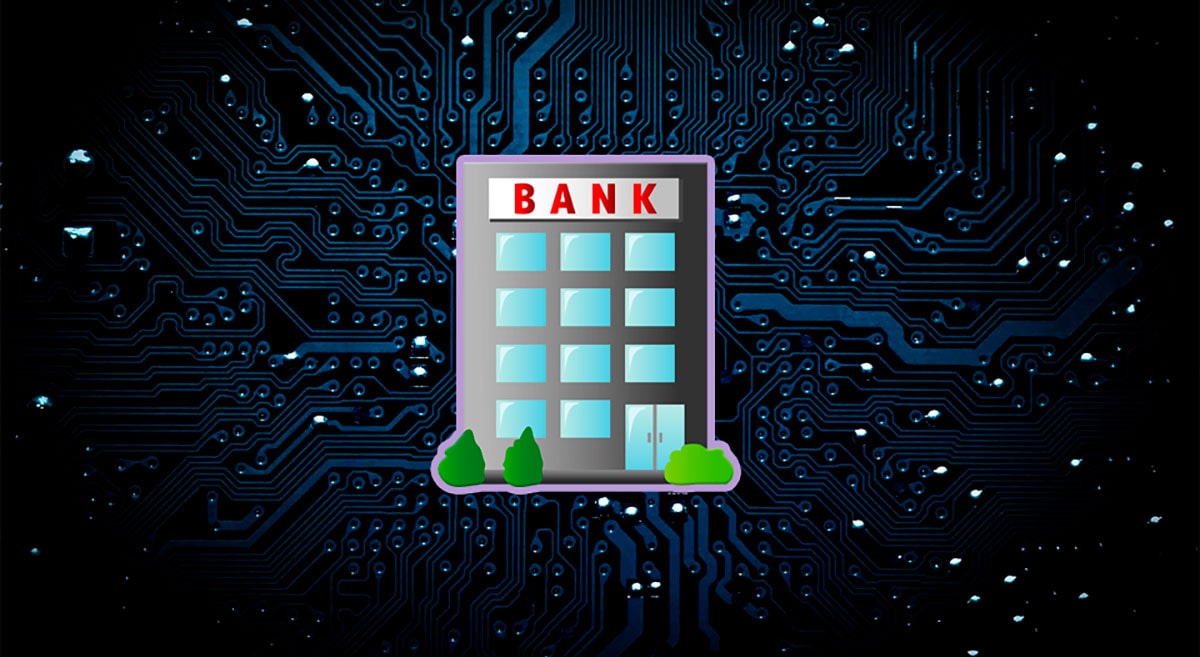Banking as a service has a huge potential, expected to reach mainstream adoption within two to five years. Let’s discover the basic mechanisms and perspectives of the BaaS industry.

Source: Pixabay.com
A recent survey with over 1,000 business decision-makers showed that over half of European business leaders expect BaaS to ultimately substitute traditional banking. Seeking to deliver efficient financial service, 39% of respondents have already implemented BaaS services and products. Meanwhile, another 38% are considering using BaaS solutions in 2023.
Taking into account the growing adoption rates, the total BaaS platforms revenue will rise by 240% within five years, from $11 billion in 2022 to $38 billion by 2027. The impressive growth will be driven by the ability of BaaS to strengthen relationships between brands and their customers with a user-friendly banking and payments experience.
How does Bank as a Service work?
Banking as a service enables non-banking companies to offer financial service without owning a banking license or infrastructure.
Typically, developing in-house banking platforms is costly and requires a lot of effort from the dedicated team. Additionally, there are a lot of regulatory hurdles to overcome before an institution may legally handle customers’ money. However, integration of non-banking businesses with regulated financial infrastructure via APIs allows all types of firms to provide banking services and offer related products.
The cooperation may come in various forms. Unlike traditional banks, BaaS players do not own the entire financial technology value chain. The most popular and simple BaaS model presupposes that a BaaS provider supplies its banking licence, products, operations and/or financial technology for use by aggregators, other banks, and non-financial companies (NFCs).
However, providers may also act like aggregators, coupling their own capabilities with other vendors to create a full-stack “out-of-the-box” solution. Moreover, distributors may also add complexity to the BaaS ecosystem. Sometimes they enhance the propositions they distribute by adding new products or technology from multiple providers. That’s how the ever-growing API banking solution gains strength and value.
Is Banking as a Service a new model for revenue growth?
Banking as a service helps both banks and non-bank institutions to increase their revenues in a win-win scenario.
On one hand, BaaS integration helps non-financial companies increase their customer base and expand service offerings. They get more chances to monetise their relationships with clients.
On the other hand, BaaS banks charge a small fee for each API transaction or charge regular fees for access to the specific product/service, boosting profits without investing in additional technological development or direct customer acquisition.
Moreover, banks receive more information sources about the customers’ financial requirements and buying habits. They collect more data via API banking suites, which gives provider institutions precious insights and enables them to create personalised offers for their customers.
The BaaS model is currently mainly used for retail offerings. However, the recent Finastra study, Banking as a Service: Outlook 2022, indicates that SME lending, corporate lending, and corporate treasury/FX services are poised to gain the highest traction in the future BaaS solutions. SME lending offers a tremendous revenue potential for BaaS, having generated $252 billion in overall market revenue in 2020.
What is the full meaning of BaaS in a bank?
Banking as a Service (BaaS) enables contextual finance and presents numerous opportunities to all participants. It is a quick and seamless way for legacy banks to embrace digital transformation and become more competitive. Banking service in itself is not a novelty, but, coupled with a fintech proposition, it is becoming a unique all-in-one solution.
As banking at a branch is gradually losing demand, the banking industry is welcoming a large number of challenger startups. A fully digital bank or neobank does not necessarily have a proper banking licence. Therefore, both neobanks and other financial technology (fintech) players may partner with established bank brands to fuel their platforms.
The embedded BaaS financial services can be either co-branded or implemented as white-label banking. In the latter case, the end solution doesn’t immediately show the branding of the BaaS provider (licenced banking institution).
Therefore, for emerging fintechs, BaaS is a great opportunity. They can start a full-scale bank or add embedded financial services almost solely by employing third-party solutions. Basically, neobanks don’t need to develop their own specific infrastructure to launch a new offering – a brand and a business development team would be enough to start, if you use banking as a service option.
To integrate BaaS platforms into their daily operations, banks should establish an open API software connection to their business partners. Such platforms link businesses with online reach to the banking systems of licensed banks via an API. For the end customer, it looks like they access banking services directly through the third-party’s website or app. However, the non-bank company never really processes the customer’s money, it acts simply as an intermediary, not dealing with any of the regulatory duties a bank has to fulfil.
Moreover, the API platforms do not necessarily belong to the bank. It may use third-party BaaS platform providers’ middleware software and financial applications.
This B2B offering includes access to various types of real-time financial services and products.
What is the difference between banking products and services?
Banks usually open up their APIs to facilitate and promote specific banking functions like loans, credit cards, deposits, insurance and payments.
Here we must distinguish between banking products and connected services. Banking products are asset custody (bank accounts), cash management solutions (credit cards) or credit options. Meanwhile, banking services involve funds maintenance, client onboarding, securing transactions, processing transfers, etc.
In today’s digital era, customers are not keen to go for services provided by the traditional financial services industry. At the same time, fintechs and non-bank businesses can create innovative offerings based on the products supplied by BaaS banks. The enriched and customised services we get in the end are a unique blend of two sets of capabilities.
For instance, high-class KYC and fraud-prevention solutions of a legacy bank safeguard instant credit decisions facilitated by fintech’s AI algorithms. Or else, fintechs may come up with completely novel concepts like Credit-Union-as-a Service, opening up new channels in the BaaS space.
What is a Banking as a Service Provider?
In a BaaS ecosystem, there are a lot of different players. The main types are: a licensed bank, a BaaS provider, the client (third-party company) and an end consumer.
BaaS providers are usually not traditional banks, but developer companies that build BaaS platforms integrated with banking products and services. On one hand, they work with “licence holders” – banks that provide the underlying banking products and services. At the same time, providers enable their customers – both fintechs and non-financial companies – to offer financial services to their existing user base.
While BaaS providers typically serve as middlemen, there are BaaS schemes which work without mediators. For instance, banks can develop their own API platforms and become BaaS providers, like SMB Bank India, BBVA, Fidor Bank and Starling have.
BaaS providers blend five financial service components into a single platform accessible through APIs:
- A regulatory banking licence;
- Direct or indirect membership or access to the payment networks and schemes;
- One or multiple banking partners in charge of safeguarding customer funds;
- A core banking system to onboard customers, hold customer accounts, generate cards, send and receive bank payments, manage deposits and loans, etc.;
- Operations and compliance with all KYC / AML / CFT regulations.
Examples of Top-Rated BaaS Providers
Banking as a service is a great opportunity for tech players and software developers, so there are numerous BaaS solutions on the market today. Let’s take a look at the most distinguished BaaS providers and the platforms they offer.
SolarisBank – is a German tech company with a full banking licence, e-money and brokerage licences. It offers customers access to digital banking and cards APIs, digital KYC services, paperless consumer and SME loans, crypto custody and brokerage solutions, and more. The BaaS provider counts Trade Republic, American Express, BP, Samsung and Vivid among its customers.
Bankable – provides a range of payment solutions under a “Banking as a Service” model. Its core virtual account management platform is available as a white-label solution or via APIs. The platform enables businesses to deploy digital banking solutions, virtual account services, card management and processing services, and payment processing services.
ClearBank – is a fully regulated cloud-based clearing bank that offers access to FSCS-protected accounts, connection to Faster Payments for real-time withdrawals, multi-currency cross-border payments and FX capabilities. It is ranked number 14 in the 2022 Deloitte UK Technology Fast 50 ranking of the fastest-growing technology companies in the UK.
Treezor – is an API-based white label core banking platform that operates as a “one-stop shop payment solution” covering the full payments scope. The French-based provider enables third-parties to offer personalised payment services such as wire transfers, peer-to-peer (P2P) transfers, account management, digital wallets, check acquiring, as well as physical and virtual prepaid, debit, and credit cards, and dedicated International Bank Account Numbers (IBANs).









